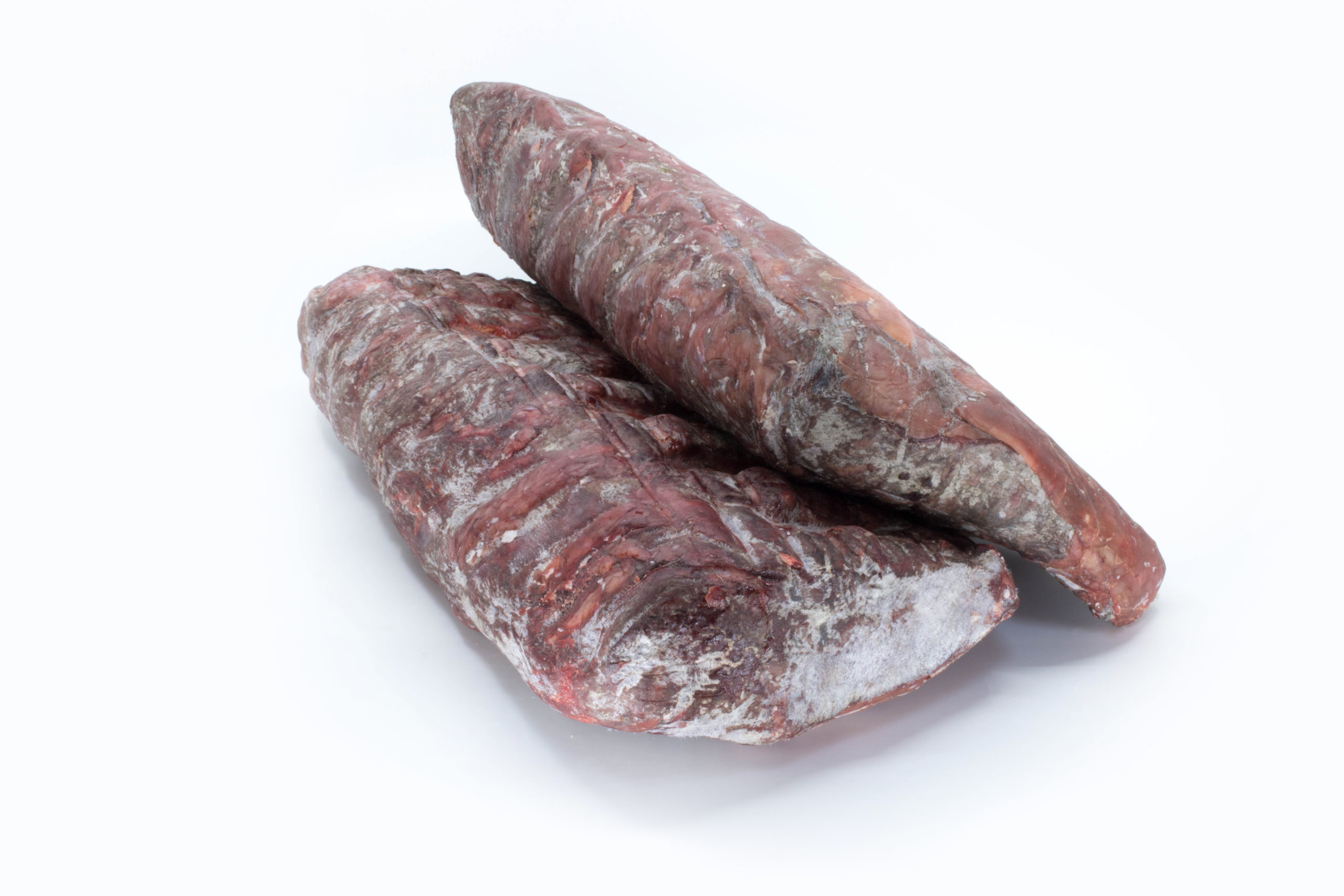Product Description
Sizing: On average, each ribeye will weigh approximately 14lbs, with a 1.5lb variance (a low of 12.5 to a high of 15.5lb).
Holstein Breed: Sourced from USDA Prime Holstein cattle within California and Arizona, there a few immediate differences between these Holstein ribs and a traditional Angus Rib primal. Most noticeably, the Holstein will have a smaller overall weight. The Angus breed tends to have larger “kernel fat” in the rib than Holsteins will, though it varies from animal to animal. Holstein Rib eyes will present with a slightly elongated shape; the eye of the primal will be more teardrop shaped than the oval shape common with Angus. A more important but somewhat subtle difference lies within the marbling structure itself. The Holstein will tend to present with finer but more widespread marbling which accounts for the consistent palate the beef delivers.
Age: No dry aging with this product. Wet aging will advance the tenderness at a slower rate than dry aging, but here is some effect. There will be a higher moisture content to this level of age, but this is really only noticeable precooking. The goal here, is to be able to use this higher quality beef ant a somewhat lesser price point.
Packaging & Shelf Life
Shelf Life: 15-20 days in original slaughterhouse packaging
Packaging: The Rib eyes will arrive in original slaughterhouse packaging and be packed 2 per Flannery Beef custom carton. This will greatly add to the shelf life as likelihood of package failure in transit is diminished. We believe a 30day shelf life for the packaged primals is possible but recommend about half that time. In both cases this is assuming each primal maintains a tight seal. If the vacuum seal has broken during transit, and there is visible air in, or looseness to the package, we recommend either removing immediately from packaging, or making a small opening in the bag to prevent trapping any naturally occurring enzyme gasses.
Product Description
Sizing: On average, each ribeye will weight approximately 13lbs, with a 1.5lb variance (a low of 11.5 to a high of 14.5lb).
Holstein Breed: Sourced from USDA Prime Holstein cattle within California and Arizona, there a few immediate differences between these Holstein ribs and a traditional Angus Rib primal. Most noticeably, the Holstein will have a smaller overall weight. The Angus breed tends to have larger “kernel fat” in the rib than Holsteins will, though it varies from animal to animal. Holstein Rib eyes will present with a slightly elongated shape; the eye of the primal will be more teardrop shaped than the oval shape common with Angus. A more important but somewhat subtle difference lies within the marbling structure itself. The Holstein will tend to present with finer but more widespread marbling which accounts for the consistent palate the beef delivers.
Age: We believe the 14day product is the most versatile. Beef primals lose the highest percentage by volume of moisture during the first two weeks of the dry aging process. As the aging process continues, the amount of moisture loss continues, but at a much slower pace. At this age level, the dry aged flavor is noticeable, but not overpowering. It is a great entry point for diners who have never experienced dry aged beef, as well as enjoyable for those who have.
Packaging & Shelf Life
Shelf Life: 12-15 Days in original packaging
Packaging: Shrink vacuum sealed individually, these ribeyes are packed 2 per Flannery Beef custom carton. If the vacuum seal has broken during transit, (not likely with shrink packaging, but possible) and there is visible air in the bag, or looseness to the package, we recommend either removing immediately from packaging, or making a small opening in the bag to prevent trapping any naturally occurring lactic acids.
Product Description
Sizing: On average, each ribeye will weight approximately 13lbs, with a 1.5lb variance (a low of 11.5 to a high of 14.5lb).
Holstein Breed: Sourced from USDA Prime Holstein cattle within California and Arizona, there a few immediate differences between these Holstein ribs and a traditional Angus Rib primal. Most noticeably, the Holstein will have a smaller overall weight. The Angus breed tends to have larger “kernel fat” in the rib than Holsteins will, though it varies from animal to animal. Holstein Rib eyes will present with a slightly elongated shape; the eye of the primal will be more teardrop shaped than the oval shape common with Angus. A more important but somewhat subtle difference lies within the marbling structure itself. The Holstein will tend to present with finer but more widespread marbling which accounts for the consistent palate the beef delivers.
Age: At this age level, the dry aged flavor is more pronounced, and will be instantly recognizable to anyone familiar with aged beef. The flavor profile will be more pronounced than the 14 day, but in a beneficial, not detrimental way. It will build on the changes occurring in the 14 day, and will increase in both tenderness and flavor
Primals will show a heavy darkness from the time in aging, and this should be thinly remover prior to preparation (here we are talking about the drier/crustier surfaces, not the simple brown discoloration). The only reason for this is that after 4 weeks of dry aging, the exterior surfaces not having a cover of fat will develop a thin crust, which will be slightly noticeable post cooking.
Packaging & Shelf Life
Shelf Life: 12-15 Days in original packaging
Packaging: Shrink vacuum sealed individually, these ribeyes are packed 2 per Flannery Beef custom carton. If the vacuum seal has broken during transit, (not likely with shrink packaging, but possible) and there is visible air in the bag, or looseness to the package, we recommend either removing immediately from packaging, or making a small opening in the bag to prevent trapping any naturally occurring lactic acids.


